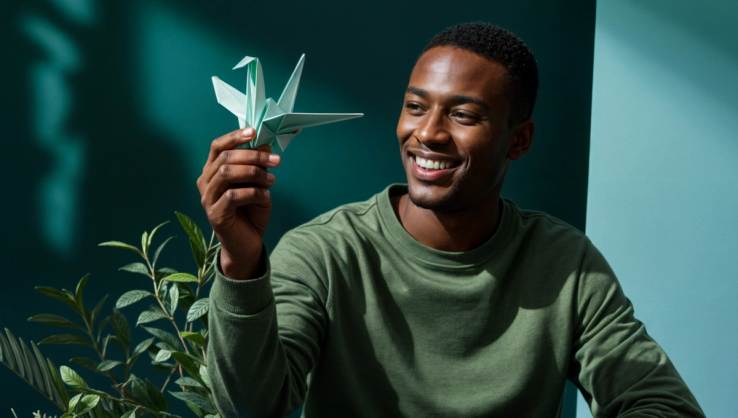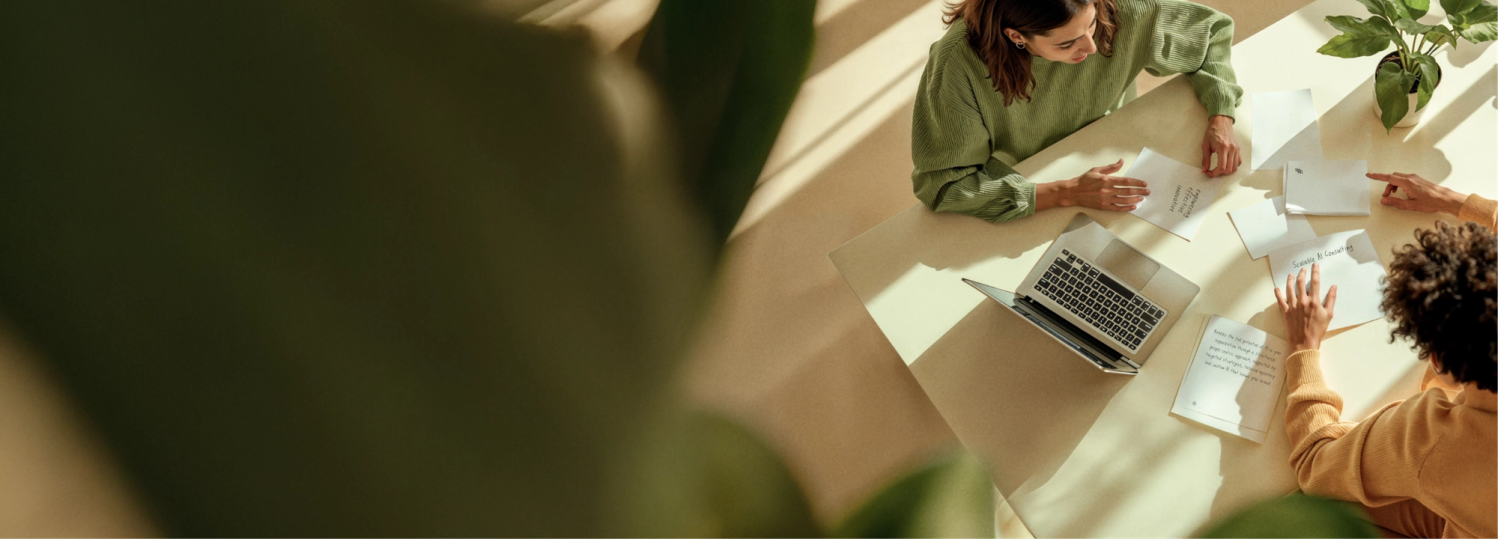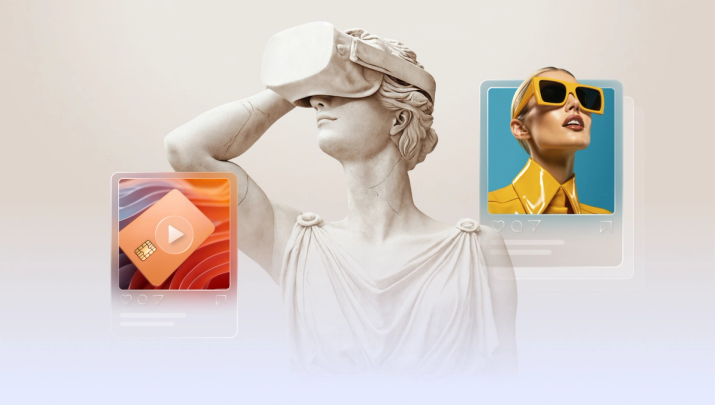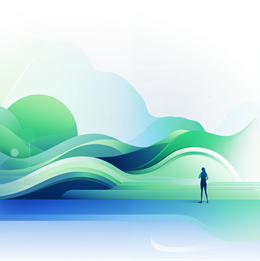
The Role of AI in SaaS: Enhanced Efficiency and Results
Published 8 May, 2024
Approximately 67% of all SaaS companies found that AI strengthens their value proposition. We’ve teamed up with Superside experts to help you scale faster with AI, whether you’ve already implemented AI in your SaaS product or are looking to use it for your day-to-day work.
If you work in SaaS, you’ve either tested artificial intelligence (AI) for your own workflows, read an AI “hot take” on LinkedIn or been told that you need to “work faster.” In some cases, all three within the same conversation.
The reality is that while AI can be a contentious topic in some SaaS circles, it’s here to stay. And those who simply want to ignore it will be left behind.
How is AI transforming the SaaS industry?
I’m not saying that AI’s going to take our jobs. But, people working in SaaS need to get on board with the notion that AI is becoming more embedded into the products we build, the tech stacks we use and our conversations.
In this article, we’ll dive into AI’s contributions to the SaaS landscape and how SaaS businesses can use AI to maximize their success. In plain terms: Scale fast without sacrificing quality. Plus, we interviewed Tamara Dalhuijsen, Generative AI Project Manager at Superside, to bring you stories from the front lines.
A Look Into AI's Contribution to the SaaS Landscape in 2025
Just as it’s important to stay on top of design trends if you’re a designer, the same applies to SaaS workers with trends in the SaaS landscape.
But, don’t take our word for it. A recent AI in SaaS study by Gitnux found that:
- 83% of SaaS vendors that don’t currently use AI plan to incorporate it within 2025.
- In the next 18 months, usage of AI in SaaS customer service is expected to rise by 183%.
- Approximately 67% of all SaaS companies found that AI strengthens their value proposition.
That last point is incredibly important because it indicates that it’s not just SaaS workers who value AI, but our customers too. It’s a competitive advantage.
5 Ways SaaS Companies Can Maximize AI-Driven Success
I believe that AI will significantly influence SaaS businesses in the near future, potentially within months rather than years. I have integrated AI into my daily operations and have seen substantial efficiency improvements.

We’ve walked through the importance of AI in SaaS. But, how do we actually use it to drive success? Let’s walk through some real-world applications of using AI to scale our workflows and businesses.
1. AI-driven personalization
Including someone’s first name in an email just isn’t enough anymore. You need to deliver a completely personalized experience to your customers and audience. With 6 in 10 consumers being adamant that companies should use their data to tailor experiences, SaaS businesses are under a tremendous amount of pressure to deliver.
I believe AI shines brightest in personalized and hyper-targeted marketing. Reflecting on recent marketing trends, there is a noticeable rise in content saturation and consumer fatigue.

That’s why platforms like TikTok have been so successful, especially when compared to Instagram reels: Because they’ve succeeded at AI-driven personalization.
It’s important to state that AI-powered personalization extends beyond the sales process (and uncontrollable TikTok scrolling). It’s also great for marketing efforts.
By leveraging AI for personalization, we can create experiences where consumers feel truly recognized. This technology helps deliver content that resonates more deeply with individual values, moving beyond generic consumerism to engage in a way that feels both authentic and relevant.

As Tamara mentions, by leveraging AI, you can create highly targeted marketing campaigns that resonate with specific customer segments. Deliver tailored experiences that capture the attention of your prospects and drive engagement across:
- Hyper-personalized lifecycle marketing campaigns.
- Tailored email campaigns.
- Dynamic website content.
2. AI in customer engagement and retention
Using AI and machine learning within your SaaS company can be instrumental in delivering exceptional customer experiences and driving down your churn rate. It can help you do this from multiple angles, including:
- Getting a deeper understanding of your users and their behavior patterns.
- Use your findings to deliver more tailored product, customer success and marketing experiences, like using AI-generated personalized content.
- Mitigating customer churn with AI-optimized engagement strategies.
- Lean into the most optimal moments to educate your users about certain features, tips and influence better product adoption.
- Revolutionizing automated customer engagement by delivering a seamless, personalized experience at scale.
- Delivering an overall better customer experience, which in turn, will take users from customers to loyal advocates.
3. AI-powered automation
When you think about your day-to-day, does it involve repetitive tasks, like data entry or generating a weekly report? AI development tools can enhance these processes, making automation more accessible and efficient. AI also empowers employees to spend less time on repetitive, mundane tasks and more on strategic, impactful work. This can be particularly useful in SaaS applications like project management, where automation can help streamline workflows.
I personally foresee AI facilitating the merge of various roles in the SaaS industry, such as project management, social media management, and paid media management, into a single position, due to its capacity to provide assistance.

To help inspire you, here are some examples of workflows that can be powered by AI include:
- AI-powered writing assistants to proofread, rewrite, or edit your work and help scale content production.
- Revenue intelligence platforms to summarize key talking points, excitable moments and next steps from sales calls.
- AI-powered chatbots to tackle common support tickets from customers and serve up relevant help docs.
4. AI-powered SaaS design
In a 2018 McKinsey report, The Business Value of Design, they found that companies who performed best in design, achieved an average revenue growth that was 32% higher than their peers over a five-year period. Design isn’t just about making things look pretty, but functional, inviting and action-oriented. Great design is a revenue magnet.
AI has enhanced our creative outputs through ideation and assisted with custom image libraries, speeding up illustration and allowing us to make designs more targeted and aligned with our customer's objectives.

That’s why it’s so critical that businesses invest in not only great design, but also in ways to scale your design operations faster too.
Although we’ve seen a healthy uptick in using AI to facilitate design, there is and always will be a need for human design, creativity and thinking. Working with AI over the last 9 months has confirmed that design comes down to good taste, intuition and critical thinking which are all human-centric qualities that AI does not possess. While AI is an invaluable tool, remember, we're the ones steering the ship.

When you invest in AI-powered SaaS design, you’re able to:
- Build and deliver visually stunning and highly engaging web designs at a fraction of the cost.
- Launch omnichannel marketing campaigns by taking a single design and using AI to generate on-brand designs for your top channels.
- Scale your advertising programs without sacrificing on design quality.
5. Maximizing scalability with AI
Put simply, AI empowers SaaS users to scale faster by automating repetitive manual tasks and offloading cognitive load. It’s also able to analyze trends across large data sets, which can save an employee hours (if not weeks or months).
There's an undeniable need for human talent, alongside a constant requirement for us to comprehend, deploy, and adapt as AI technology progresses to scale better and more efficiently.

To help inspire you, here are some examples of processes that AI can help scale:
- Using AI-powered chatbots to help handle a large amount of queries without human intervention and provide around-the-clock customer support.
- Gaining a better understanding of user preferences and behavioral patterns by leveraging AI to analyze large datasets, point out trends and optimize user experiences across product and marketing.
- Repurposing content by building AI-powered workflows to take blog posts and turn them into social media posts, summaries, emails and more.
5 SaaS Companies Leveraging AI to Stay Ahead of the Curve
1. Superside
Superside, our subscription-based design service business, has embedded comprehensive AI capabilities throughout our different creative services. Implementing AI across their services means that their customer base is able to keep their design systems and branding fresh and in line with the latest design trends.
Superside has a proven track record of empowering SaaS businesses to scale their design systems, output and impact, including:
- Scaling Salesforce’s motion graphic production across a wide range of applications like explainer videos
- Rapidly implementing and executing on design as Webflow was transitioning from their old brand to their new fresh look
- Developing a new and vibrant illustration style for Turing as they aimed to stand out as an exciting employer, as well as a top-of-the-line B2B service provider.
But what about SaaS and AI? For PlayerLync, a SaaS-based platform that combines mobile content management, operational and compliance support in a single native app, Superside created over 300 unique images and 70 custom-crafted visuals with AI to build an extensive, higher-quality asset library without escalating costs.
Superside's approach to AI gives SaaS businesses a leading edge
Superside is way more than a simple design agency. Our ready-to-scale creative services empower businesses to combine the benefits of AI for scalability and excellent design. That way SaaS companies will be better equipped to outperform competitors.
Bridging these two skills, Superside’s subscription-based model has been able to drive a 65% life in ad performance and while empowering overworked creative teams to expand their creative output 10X
with speed and scalability of AI.
Businesses can scale creative production for programs—like ads—fast, giving them the ability to execute faster, test more often and iterate as needed.
It’s also important to note that AI isn’t a silver bullet for design and by no means is it meant to replace the incredible value that designers bring to the table. It’s an addition, not a replacement.
2. Spotify
Personally, Spotify’s “Daylist” (which isn’t exactly a SaaS company) is one of my favorite uses of AI in a streaming service thus far. In part because it’s really cool, but mostly because it means that I get to listen to music I love while discovering new artists.
When it comes to music players, Spotify is right up there with delivering hyper-personalized experiences for its users based on their listening patterns (and patterns of people similar to them). Daylist is a great use case for AI because Spotify now provides users with a rotating playlist throughout the day that gets built based on your historical listening habits each day, as well as time of day too.
According to Spotify, on Thursday nights, I tend to listen to “hippie” and “movie nights” type music. So, they built a playlist surrounding those themes. And guaranteed that many users like myself are eager to consistently check back at least three times a day to find out what our new Daylist has to offer.
3. Shopify
When it comes to leveraging AI, Shopify is a great example. Shopify Magic, the company’s new AI tools, integrates within the platform, enabling increased productivity for their clients with the power of generative AI.
It’s a well-known fact to marketers that design work can take a long time. Between ideation and feedback, to iterating after setting ads live. But, Shopify scaled ad creative fast by partnering with Superside to create ads faster.
By accelerating their output of ad creative with Superside, Shopify was able to test across multiple channels and have creative ready for a wide range of formats and dimensions needed. They even had time to throw in some motion design across ad creative to drive up performance and campaign success even more–imagine what they could achieve with AI-powered design!
4. Grammarly
When they first launched, Grammarly took the world by storm. They gave people a way to have an always-on writing assistant that went beyond spell-checking your work. Grammarly let writers have a “buddy” that checks their work, an on-demand editor at their fingertips.
With the use of AI, Grammarly provides:
- Writing for a specific sentiment.
- Analyzing text better to inject the writer's voice into AI-generated content.
- Ensuring you never have to look at a debilitating blank page again.
5. Semrush
At its core, Semrush is a leading SEO tool. But, a really neat way they’ve implemented AI into their platform is by giving customers the ability to repurpose written content into video, which in turn is a great strategy for improving SEO.
If you work in content or marketing in general, you’ll know that repurposing content is a crucial part of the job. And, it’s time-consuming too. That’s why this is such a great way for Semrush to drive even more value for customers: repurpose content in seconds rather than days or weeks.
The Roadblocks of AI in SaaS: Challenges Ahead
While AI in SaaS sounds like a fever dream that we never want to wake up from, there are unfortunately challenges that we need to be aware of to use it responsibly.
1. Intellectual property and data privacy
AI-driven SaaS applications harness user data as a primary resource for training algorithms. As a consequence, organizations face heightened privacy concerns regarding the collection, processing and utilization of sensitive information.
Ultimately, it means that the data you feed into AI contributes to the model’s development.
Basically, AI is learning from your private data. This puts companies at risk for exposing their intellectual property, including things like:
- Confidential documents.
- Proprietary workflows.
- Sensitive communications.
- Competitive analysis.
- Customer data.
2. Lack of skilled talent
According to one survey by McKinsey, the shortage of data scientists in the US alone is predicted to reach 250,000 by 2025, indicating a significant talent gap in the implementation of AI-powered solutions.
It’s one thing to know how to write simple prompts for ChatGPT, it’s another to have a deep expertise in being a machine learning engineer. Finding the right talent, especially when the demand is higher than the number of candidates, is a clear challenge for anyone looking to implement sophisticated AI solutions.
There's an undeniable need for human talent, alongside a constant requirement for us to comprehend, deploy, and adapt as AI technology progresses to scale better and more efficiently.

3. Striking the SaaS balance
When thinking about implementing AI solutions into your SaaS product, it’s important to stick to the basic principles when building a product:
- Is your product user-friendly?
- Are you implementing cost-effective solutions or are you burning capital at an alarming rate?
- Are the solutions you’re implementing scalable? Do they add wind to your sails or slow you down?
Consider these three challenges when strategizing your AI implementation plan.
The Next Wave: Future AI Trends in SaaS
Whether it’s companies like Superside using AI to scale ad creative at lightning speed or Spotify using it to create new listening experiences for their customers. As more companies implement AI across their operations, we’ll continue to uncover more creative ways to scale, automate and personalize with AI.
AI serves as a powerful tool, but it's our human teams who masterfully determine its most effective applications, and critically, when not to use it. It's our people who strategize, make adjustments, and persist in the face of challenges. While AI may be the vessel, it's the human spirit that infuses our journey with heart and soul, and I believe this dynamic is here to stay.

What’s in store for AI in SaaS this year?
AI will be easier to manage and implement
Integrating AI and SaaS should become easier to manage and implement.
With more SaaS applications implementing AI solutions, there’s a higher demand for more simplicity in integrating AI. In fact, over 50% of SaaS companies cite that integration complexity is one of their major operational headaches. And if you work in SaaS, one thing always holds true: people build products to solve big problems.
It’s only a matter of time before more AI-centric businesses build better ways to implement AI across SaaS, or new companies will form to solve that niche problem.
Rise of low-code and no-code platforms
Finally, low-code and no-code platforms are becoming easier to access, opening new SaaS doors in different industries.
The desire for software development has been expanding beyond traditional developers for years now. We’ve seen that with the rise of platforms like Webflow and Zapier. People want to be more autonomous and rely less and less on specific skill sets.
Akkio is a great example of bridging the gap between no-code and AI by giving you the ability to build, deploy and integrate AI models, all in one place, without any technical expertise. You can explore an extensive list of no-code AI tools here.
Superside, Your Partner in SaaS Innovation
It’s no secret that AI has proven to help SaaS companies maximize efficiency, performance and scalability—when implemented correctly of course. So, if you’re looking to explore more ways to scale your work, especially across design, we’re here to help!
With the power of Superside’s expert designer network and AI, you’ll be able to improve design turnaround times, test creative faster and, as a result, grow.
If you’re looking to dip your toes into the world of AI, Superside is a great place to start!
Hiba Amin is a Contributing Writer at Superside. As a marketing leader who lives and breathes content, she's had the privilege of heading up content teams and has also been in the trenches as a marketing team of one. She's worked at a wide range of tech companies across PLG, SaaS and most recently, AI. Say hi to her on LinkedIn (and ask her about her dog, Milo!).
























